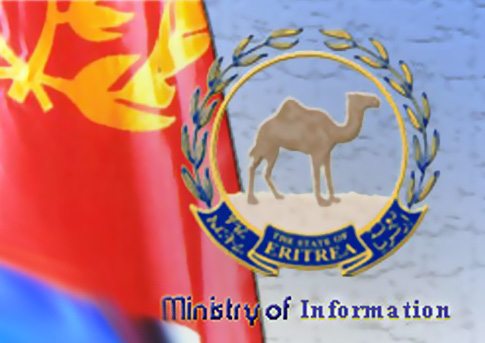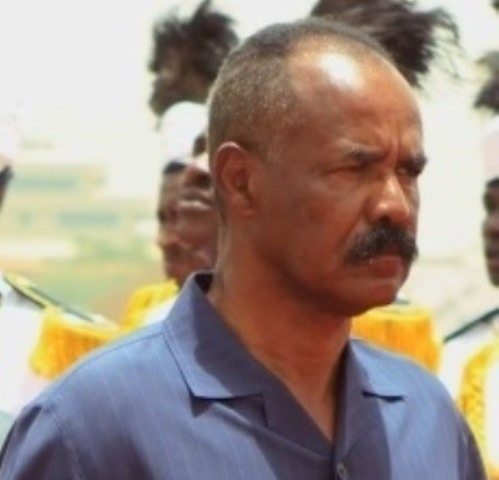The Ethiopian government issued a formal response to the UNESCO’s World Heritage Committee request that the construction of the Gibe III Dam be halted immediately.
It is to be recalled that the Committee made the request in its session held last June in Paris, France. The government’s objection was indicated in a brief remark by the CEO of the Ethiopian Electric Corporation, which owns the dam project, to a local newspaper in the beginning of August. [Check the Gibe III dam Archive Archive.]
In the meantime, it appears, the Committee wrote a letter to the Ethiopian and Chinese governments – the latter due to Exim Bank’s involvement in the financing.
The government’s response was published on the Sept. 2, 2011 issue of A Week in the Horn of Africa, the weekly press release of the Ministry of Foreign Affairs, titled UNESCO’s World Heritage Committee and Gilgel Gibe III.
The statement reads:
UNESCO’s World Heritage Committee first raised its apparent concern about the construction of the Gibe III Dam and the possible impacts on Lake Turkana, a World Heritage Site, at a meeting last June. It warned that the Gibe III Dam was likely to significantly alter Lake Turkana’s fragile hydrological regime, and would threaten its aquatic species and associated biological systems. The Committee urged Ethiopia to immediately halt all construction on the project and called for all financial institutions supporting the Gibe III dam to put their financial support on hold until the Committee reviewed the issue next year. In a letter to the Ethiopian and Chinese governments, (a Chinese state-owned bank is providing some of the funding) the Committee referred to Lake Turkana as an outstanding research area for animal and plant communities, and notes that the area’s rich fossil finds have allowed “reconstructing the history of animal species and mankind over the past 2 million years”. The Minister of Water and Energy, Ato Alemayheu Tegenu, who visited the project last month, said the dam was on schedule for completion in 2013. The two billion dollar scheme will produce 1,870 MW when finished and involve a transmission line to the Gilgel Gibe II project and to Addis Ababa.
The Committee made its call for a halt to the project on the basis of information received from two of the more persistent and vociferous campaigners against the dam: International Rivers and Friends of Lake Turkana. These groups in turn quoted from a draft African Development Bank document: ‘Assessment of Hydrological Impacts of Ethiopia’s Omo Basin on Kenya’s Lake Turkana Water Levels’ which was released in April 2010. The final draft, written several months later, after quantifying potential impacts came to rather different conclusions. It did not find a threat to productive fishing areas; it rejected concerns about seepage; and it concluded that once filled the dam would not cause lake levels to fall. It did point out that extensive irrigation development might have an effect, but irrigation is not a major factor. Gilgel Gibe III is a power generation project, though the regulation of the river’s flow might allow for small-scale downstream irrigation. That, however, would play an important role in breaking the cycle of food shortages, droughts, floods and dislocation that this area has regularly suffered from as in the extensive floods in the 1980s and the current catastrophic drought in the region.
Western activists have no monopoly of concern of environmental issues. Nor do they have any monopoly on accuracy. The assertion that Gibe III will have devastating social and environmental impacts on the Lower Omo Valley and the Lake Turkana region is exactly that – an assertion. It might be easier to listen to some of the questions raised by critics if it wasn’t for the fact that most of the issues have been addressed in the environmental impact assessment studies already carried out, and if the criticisms were not so seriously exaggerated. The dam will not dry up ecosystems all the way down the Omo River to Lake Turkana, nor will it deal “a fatal blow to the iconic lake” or “make life harder if not impossible for hundreds of thousands of fishing families and pastoralists.” Claims that it will destroy the livelihood of half a million people living around Lake Turkana when the lake levels drop by 10 meters and it becomes saline and undrinkable, grossly exaggerate the numbers living around the lake or who might be affected. It also suggests a drop in lake levels five times greater than the African Development Study thought likely. There is no reason at all why a carefully regulated flow of water, including planned floods to provide for Omo flood plain agriculture, should “lead to water wars” for the downstream communities. And for anthropologists to say of the people affected by cultural upheaval, “simply, they will die”, is nonsense. There will certainly be some cultural effects and lifestyle changes, including the provision of roads, health clinics, schools and other developments, but to call the plans for development of the Omo basin “banishing half a million people to a hydrological hell” is mere hysterics.
Prior to the launch of the project, the Ethiopian Electric Power Corporation (EEPCo) commissioned Environmental and Social Impact Assessments from independent international experts, carried out within the framework of national and international regulations. These, of course, involved reviewing existing data as well as field surveys and questionnaires of local populations. The impact studies concluded that the project was economically valuable and environmentally friendly and that the Gilgel Gibe III dam would not endanger Lake Turkana. Indeed the assessment was that it would have, overall, a positive effect on the lake as well as regulate the water flow of the Omo River, preventing floods and raising the water level during dry seasons. The studies show that the project will provide a regulated flow for the Omo River, ironing out the river’s normal fluctuations. It will allow for the discharge of a 50 cubic meter minimum standard ecological flow and 10 days of free discharge in September, which when added to the other nine streams which flow into the river will maintain the downstream ecology during water harvesting phases. There is no evidence that any fish or aquatic species will be threatened by the dam or by regulating the flow of the river. Nor are any archaeological or historical sites affected – the lower valley of the Omo which is a UNESCO heritage site is located well downstream and will not be affected by the dam. In fact, if anything regulation of the flow is likely to provide much greater access to possible prehistoric sites.
Prime Minister Meles Zenawi has made the point that the criticisms of some environmental lobbyists suggest they simply “don’t want to see a developed Africa; they want us to remain undeveloped and backward to serve their tourists as a museum.” Critics of the project have certainly made no effort to see the undoubted benefits of the proposed development: enhancement of clean, green, energy resources, development of a rural electrification program and of local development including health clinics, schools and infrastructure, regulation of the river’s flow, avoidance of the disastrous floods and famine of the mid 1980s, development of eco-tourism and environmental education, job opportunities, guaranteed flood controlled agriculture, and overall regulation of the hydrological balance of the Omo River and of Lake Turkana. Of course, there will be effects on local populations but the point of the Environmental Impact Assessments is to ensure that effects are kept within acceptable bounds for the local people and that they will play a valuable and useful role in overall development of the region and its population. The evidence from Gilgel Gibe III indicates this will be the case.
**************
Check the Gibe III dam Archive for previous and upcoming posts.






Are you blined? Melesa is better than as. Ahya bale ka ahya ayaden. Anta feri esti tesalfe UNESCO tekawemena.Gibe 111 is not important for you but for ethiopians it is. Esti shama abrana
giben degfe, ataregewm fery! arefeh takamet. Este joro eysam endale sema. Ahun gibe 111 biaskomut ethiopia lege alate?
as if Melese care for local people